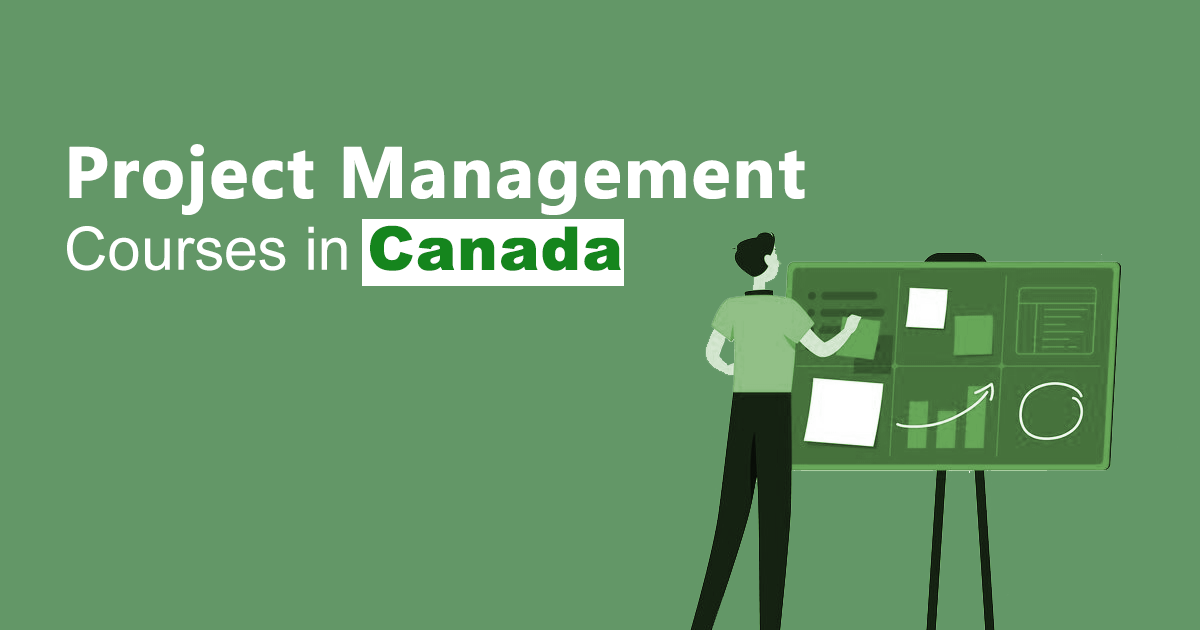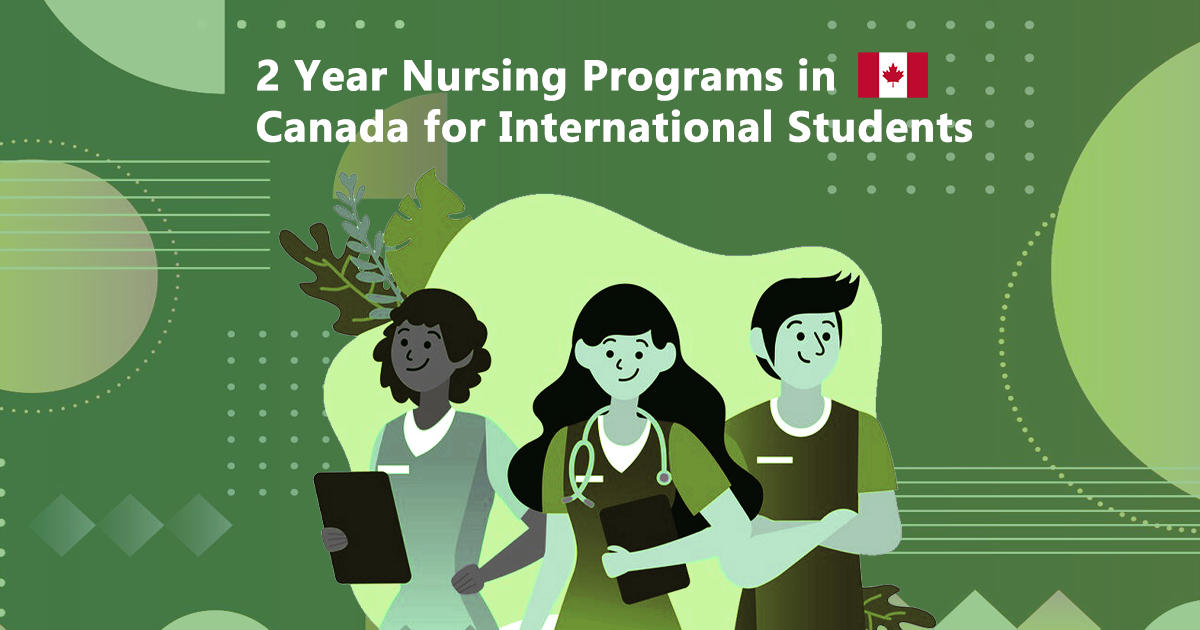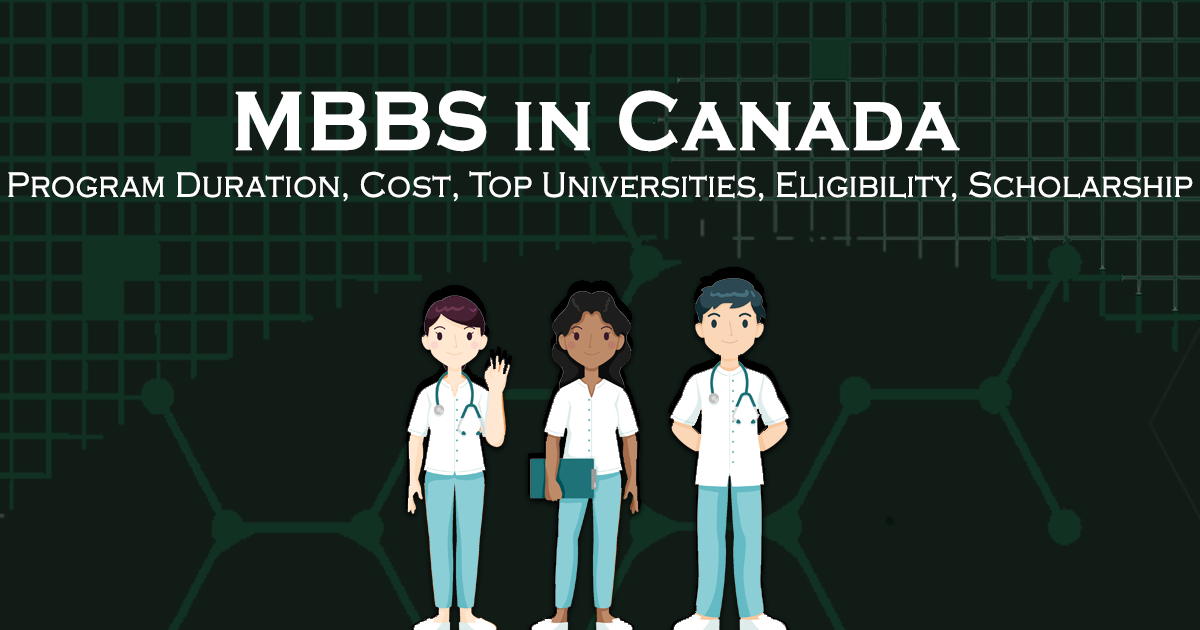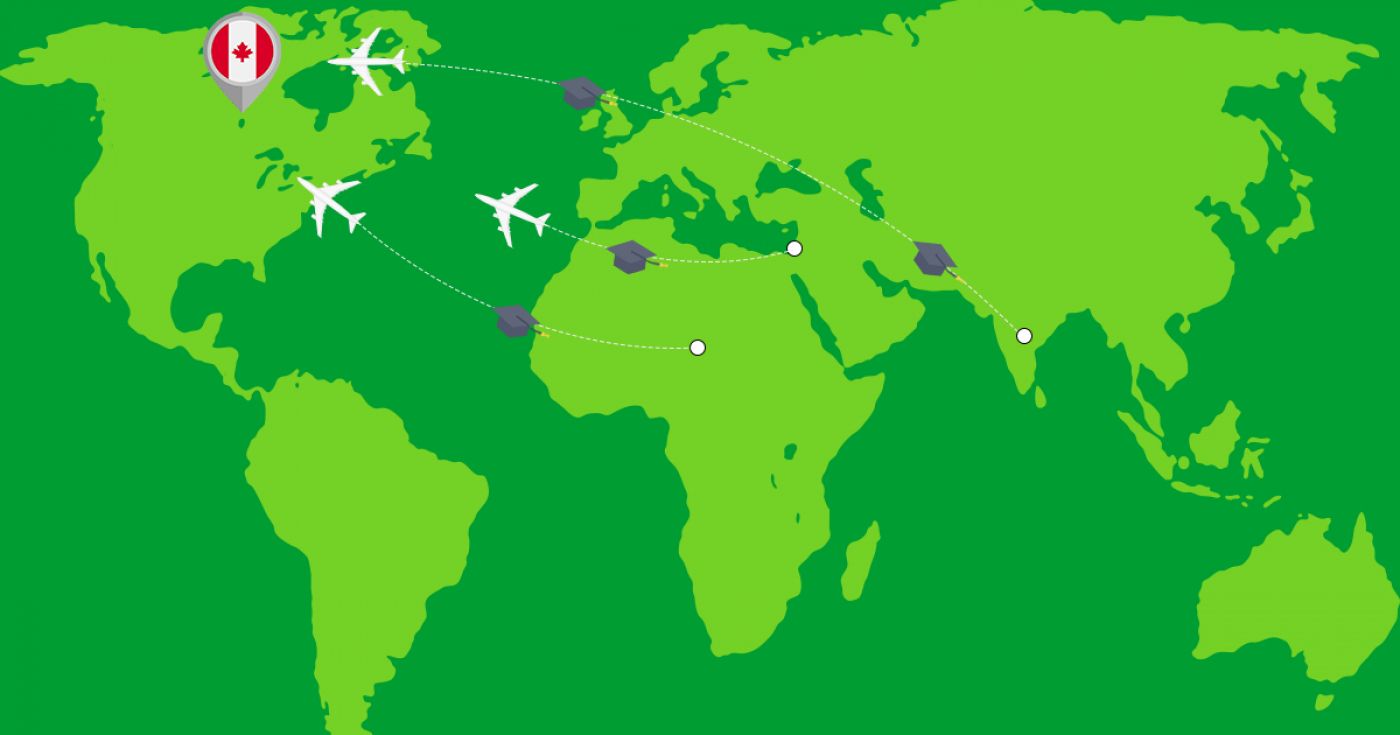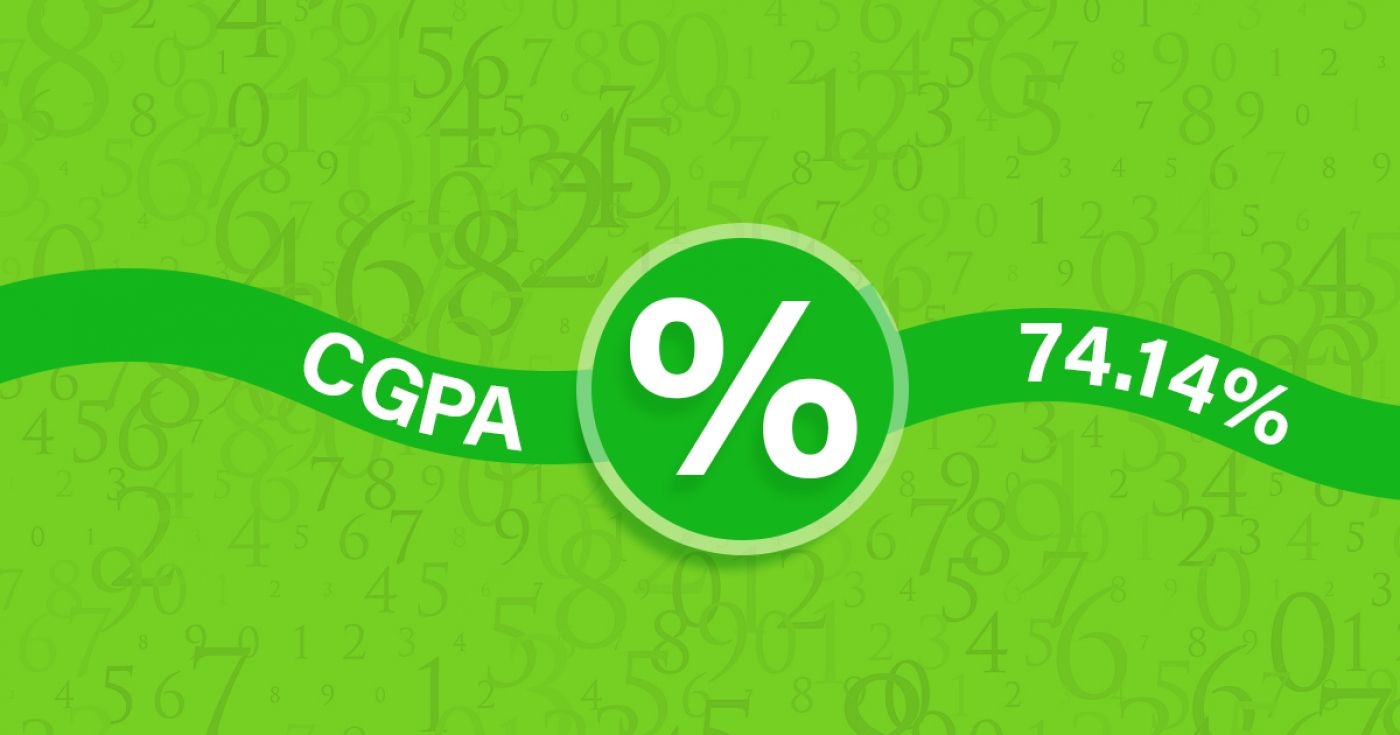Diploma in Fashion Techniques and Design
at George Brown College - Casa Loma Campus Canada
Overview
The Fashion Techniques and Design program prepares graduates for careers in garment manufacturing design rooms. This is a women's wear program that simulates, as closely as possible, the industry's standards, practices and facilities. You will use industrial machines and learn the essentials of technical illustration, pattern making, pattern grading and clothing construction. Additional core subjects include textiles, technical specifications and history of costume. Program electives allow you to select specific related subject areas, such as fashion show development, portfolio development, draping, lingerie, men's pattern drafting, leather apparel, knitwear and bridal and evening wear. Computer skills in Adobe Illustrator, pattern drafting and pattern grading are included as core and elective courses and are continually upgraded to meet industry needs. This program covers introductory methods to more advanced concepts in the second year.
An annual fashion show and portfolio event highlights successful student projects. Students have the opportunity to network with industry, participate in numerous competitions, work on applied research projects, volunteer and attend industry events.
Note: This program requires extensive sewing; manual dexterity and good vision are assets. Both sewing experience and access to a sewing machine outside of the campus facilities are expected.
At the School of Fashion and Jewellery, the learning environment is as diverse as our students and there are many extracurricular activities to take advantage of.
Program Learning Outcomes
- The graduate has reliably demonstrated the ability to:
- Draft and grade flat patterns for mass garment production.
- Select and use production methods and techniques that best suit the fabric, pattern and design of the garments.
- Select garment materials that are compatible with the overall apparel design and meet the user's needs.
- Operate industrial sewing, pressing, grading and other technical equipment safely to professional standards.
- Apply technical and computing skills to fashion design and production.
- Research and analyze factors, trends, stylistic features, and art principles that influence current fashions.
- Prepare visual and portfolio materials, product specifications, and cost analysis for a product, project and/or market.
- Design, prototype and produce original patterns and garments using mass production industrial methods and equipment.
30
Application Processing Days
Under Graduate
Program Level
Fact & Figures
Full Time On Campus
Study Mode
24
Duration
George Brown College - Casa Loma Campus
Location
Diploma in Fashion Techniques and Design Assistant Fee
$15190
Tuition Fee
$12000
Average Cost of Living
$95
Application Fee
Diploma in Fashion Techniques and Design Admissions Requirements
- Minimum Level of Education Required: To be accepted into this program, applicants must have Grade 12 / High School Diploma or equivalent including the following required course(s):
- Grade 12 English (C or U)
- Grade 11 Math (M or U) or Grade 12 (C or U)

Get superfast admissions at top Diploma in Fashion Techniques and Design institutes in 2024
Benefits of choosing
➤Admission’s guaranteed at Top institutes across the world.
➤Enjoy exclusive application fee waiver’s with Edmissions.
➤Unlimited FREE Counselling sessions with Edmission’s
Experts
➤Get Tips from industry veterans to crack the IELTS exam in 1
week.
➤Assistance with scholarships, loans, forex, student accommodation and visa guidance.
Work Permit Canada
Students who wish to work in Canada require a work permit to do so. A student in Canada can work part-time during the course of his studies and full-time during holidays and semester breaks and post the completion of their course/program.
Rules for getting a part-time work visa in Canada
You can also work part-time on campus at your university.
Work Permit
Duration
Your part-time work permit will be valid for as long as you have a valid study permit.
Working Hours
20 Hours/Week
As a full-time student, you can work for a maximum of 20 hours a week. However, you can work full- time during holidays and breaks.
Document Required to Work in Canada
List
To apply for a work permit, you will need a study permit that mentions that you are allowed to work part-time on campus.
Social Insurance Number
Study Permit
You will need a Social Insurance Number (SIN) to Service Canada. if you wish to work in Canada during the course of your studies. To apply for the same, you need a valid study permit, and you should be a full- time student at a recognized university.

You can work part-time off-campus if you are studying in the Quebec province.
Duration of Work Permit Canada
Your part-time work permit will be valid for as long as you have a valid study permit.
Work Hours Canada
As a full-time student, you can work for a maximum of 20 hours a week. However, you can work full- time during holidays and breaks.
Document Required to Work in Canada
To apply for a work permit, you will need a study permit that mentions that you are allowed to work part-time on campus.
Social Insurance Number
You will need a Social Insurance Number (SIN) to Service Canada if you wish to work in Canada during the course of your studies. To apply for the same, you need a valid study permit, and you should be a full- time student at a recognized university.
Working after completing your course
In Canada, you will need a work permit to get a full-time job in Canada after finishing your studies. You chose a work permit like the Post-Graduation Work Permit (PGWP) if you wish to stay back in Canada and work full-time.
Visit Government of Canada Website for more detail
Post-Graduation Work Permit (PGWP)
The Post- Graduation Work Permit (PGWP) allows you to work for three years in Canada if you have completed a two years degree or more.
Application
how can i apply
You can either apply online or download the form and mail the application along with the required documents. Pay your fee and then wait for the decision to come.
Application Documents Required
List
To apply for the work visa, you need a degree from a recognized and accredited Canadian University along with an intention to stay and work in Canada only temporarily.
When to Apply?
One can apply for the full-time work permit in the first three months post the completion of their course during which the study permit is still valid.
How long does it take?
90 days
You will have to wait for 90 days for the decision on your work permit.
Duration
3 Years
The work permit is valid for 3 years if you have completed a two years degree program or more.
Fees
CAD 255
The fee for the work permit is CAD 255 plus the holder fee and the work permit processing fee.
Monthly Wages
CAD 1,600
An applicant is guaranteed a minimum salary of CAD 1,600 per month while working in Canada. This amount though varies on the job and the province you are working in.
Work Hours Canada
No Limit
There is no maximum limit, and you can work for as many hours as you want on the full-time work permit.

Required Documents
List
To apply for the work visa, you will need the following documents:
- Forms: IMM 5710, IMM 5476 and IMM 5475;
- Graduation Proof
- Proof of payment of work permit fees
- Copies of your travel and identification documents, passport pages and current immigration document.
Till a decision is made on your work visa, you can continue to work full time. All you need to have is your completed degree, should have applied for the permit before the expiry of your study permit and you should be allowed to work off-campus.
Information
Disclaimer
The information provided about the work permit is true and complete to the best of our knowledge. All recommendations are made without any guarantee on the part of the author or the publisher. The author and the publisher, therefore, disclaim any liability in connection to and with the use of this information.
Detailed Program and Facts
30
Application Processing Days
Full Time On Campus
Program Intensity
Under Graduate
Program Level
24
Duration
Study Visa
Student Visa For Canada
Any student who wishes to study in Canada requires a student visa. Some of the essential information for the application process is given below.
When Should I Apply?
4 to 6 months
Ideally, one should apply for the study permit at least 4 to 6 months before the commencement of your course/program.
Bank Account
No Need!
There is no need for a blocked bank account to apply for a student visa to Canada.
Duration of visa
Course Duration + 3 Months
The student visa is valid for the entire period of your course plus three months.
Time to Wait for Visa
35 Days
It takes time. It might take up to 35 days post your interview for the application process to complete and for you to finally receive your visa.
Appointment
Required
It varies from applicant to applicant, but one may have to take part in one or two visa appointments, namely a medical examination and a visa interview.
How you can apply
Application Process
An applicant can either apply online or offline by visiting a visa application centre and submitting their documents. After the analysis of your application, you might be called for an interview.
Fee
Visa Fee
The visa application fee for Canada is CAD 150.
Minimum Funds
833 CAD, 917 CAD
You require a minimum monthly amount to be deposited into your account to prove that you can sustain yourself while studying in Canada. If you are studying in Quebec, you need to have a monthly minimum of CAD 917, and if you are studying in a province except for Quebec, you need to have a minimum of CAD 833 per month.
Any other expenses
Required
You will have to pay a medical examination fee and a visa application service fee to the tune of CAD 15 if you visit a visa application centre to apply for your visa.

Medical Examination
Required
One has to undergo a series of medical examinations to be deemed fit for a student visa of Canada. The tests mostly include blood and urine tests, chest x-rays and other organ checkups.
Language Skills
Not Required
one doesn’t need to prove their language skills in applying for a Canadian Visa.
Disclaimer: The information provided about the work permit is true and complete to the best of our knowledge. All recommendations are made without any guarantee on the part of the author or the publisher. The author and the publisher, therefore, disclaim any liability in connection to and with the use of this information.
Other Courses by George Brown College - Casa Loma Campus,Canada
Computer Science & IT
Diploma in Computer Systems Technician
As the Information Technology (IT) sector continues to grow in Toronto and our industry partners report skills shortages, George Brown College is helping to meet employer demand by educating IT professionals who understand all aspects of computer systems. Our two-year Computer Systems Technician program provides students with a broad and in-depth technical base, through courses in the high-demand areas of system support, network administration and web technologies. The curriculum prepares graduates with the strong administration, troubleshooting and design skills they need for careers in IT.
As the Information Technology (IT) sector continues to grow in Toronto and our industry partners report skills shortages, George Brown College is helping to meet employer demand by educating IT professionals who understand all aspects of computer systems. Our two-year Computer Systems Technician program provides students with a broad and in-depth technical base, through courses in the high-demand areas of system support, network administration and web technologies. The curriculum prepares graduates with the strong administration, troubleshooting and design skills they need for careers in IT.
George Brown continues to invest in up-to-date networking, wireless and security lab equipment to help students develop hands-on installation, configuration and troubleshooting skills. Students use the NetLab platform, which enables them with 24/7 remote access to Cisco Systems physical equipment. This investment, along with our hands-on teaching environment, was recognized by Cisco when the college was designated an Area Support Centre and Instructor Training Centre.
Graduates of the Computer Systems Technician program are prepared to write several industry certification exams that are in demand by employers.
Program Learning Outcomes
The graduate has reliably demonstrated the ability to:
- Identify, analyze, develop, implement, verify and document the requirements for a computing environment.
- Contribute to the diagnostics, troubleshooting, documenting and monitoring of technical problems using appropriate methodologies and tools.
- Implement and maintain secure computing environments.
- Implement robust computing system solutions through validation testing that aligns with industry best practices.
- Communicate and collaborate with team members and stakeholders to ensure effective working relationships.
- Select and apply strategies for personal and professional development to enhance work performance.
- Adhere to ethical, legal and regulatory requirements and/or principles in the development and management of computing solutions and systems.
- Assist with the implementation of computer systems.
- Install, configure, troubleshoot, maintain, upgrade and decommission computing system infrastructures.
- Automate routine tasks using scripting tools and programming languages.
- Provide technical support for computing system infrastructures that aligns with industry best practice.
- Implement the basic concept, principles, and scope of DevOps.
- Apply task automation using configuration management and the Cloud.
- Automate network administrative tasks across distributed clients.
24 month
Duration
$ 15190
Tuition
Skilled Trades
Certificate in Construction Techniques
The Construction Techniques program covers popular construction trade areas and has three intakes per year.
This program is designed to offer you choices when considering a career in the construction sector. It exposes you to a variety of trades allowing you to determine where your interests lie. The program will prepare you with basic skills that will assist you in taking the next steps in your career path.
- Semester 1: Electrical/Millwrighting
- Semester 2: Sheet Metal/Air Conditioning/Carpentry
- Semester 3: Welding/Steamfitting/Plumbing
Through practical projects interwoven with theoretical learning, you will gain confidence and experience in the individual trade sections, giving you the information necessary to make informed career choices as well as a good understanding of the construction process.
Program Learning Outcomes
The graduate has reliably demonstrated the ability to:
- Identify and use strategies to enhance professional growth and ongoing learning in the construction field.
- Identify and adhere to established health and safety practices.
- Perform all construction tasks in compliance with applicable laws, regulations, codes and ethical practices in the construction field.
- Work in accordance with established sustainability practices.
- Collaborate with a range of tradespersons and project stakeholders to maintain effective working relationships.
- Communicate technical information to a variety of clients, supervisors and tradespersons to participate in the successful completion of construction projects.
- Identify and use industry-specific technologies to support construction projects.
- Solve on-site trade-related construction problems using mathematical equations and geometric concepts.
- Select, maintain and safely operate hand and power tools and equipment used in the building construction trades.
- Assist in the preparation of project estimates.
- Assist skilled tradespersons and perform labouring tasks at construction sites.
12 month
Duration
$ 15190
Tuition
Creative Arts & Design
Advanced Diploma in Interior Design Technology (Co-op)
The three-year Interior Design Technology advanced diploma program prepares you to be an Interior Design Technologist. You will be a valuable member of the design team for building retrofits, renovations and new construction, contributing to the technical design of building interiors by design development of plans, elevations, renderings and 3D models.
Learning in state-of-the-art interior design studios with the most up-to-date equipment and software, you will develop a thorough knowledge of interior design and technical design skills.
Through the application of interior design theory, you will learn how to effectively communicate the applied and technical principles of interior design. As a graduate, your area of specialization might include, but is not limited to, the following:
- Bathroom and kitchen design/build
- Commercial, retail or manufacturing technical sales
- Fitments, colour or texture finishes selection and consultations
- 2D and 3D computer drawing, design, rendering and modeling
- Sustainable interior design practices for commercial, retail and residential
Note: If you enrol in the program in January, you are required to complete semester 2 in the summer (May to August) of the same year in order to continue into semester 3 in the fall.
Program Learning Outcomes
- The graduate has reliably demonstrated the ability to:
- Analyze a client's needs and goals by using research methodology and techniques.
- Prepare a design proposal.
- Analyze design components by using the creative process.
- Prepare an appropriate design concept of three-dimensional form which meets the criteria of a given design project by using the creative process.
- Execute appropriate presentation techniques to communicate the design concept.
- Prepare a design which reflects the concept by using current and relevant information.
- Communicate to the client the proposed design solution for approval.
- Prepare documentation needed for the implementation of the design.
- Collaborate as part of the management team, as the client's agent, in the implementation of a design project to ensure that the project reflects the design solution.
- Evaluate completed design solutions.
36 month
Duration
$ 15190
Tuition
Computer Science & IT
Graduate Certificate in Cloud Computing Technologies
As a student in the Cloud Computing Technologies one-year graduate certificate program, you will gain a comprehensive and in-depth technical base through courses in the high-demand areas of system and network administration, cloud productivity tools, cloud computing design and implementation, and cloud computing security from the most popular and fastest growing cloud providers. Upon completion of this program, you will have gained experience in Microsoft 365, Microsoft Azure, and Amazon AWS. Experience in these cloud provider platforms ensures you will be workplace ready.
As a graduate of this program, you will possess the cloud computing design, administration and troubleshooting skills necessary to support any business and attract employers from all over the world. Through lab activities and projects, each course allows you to gain hands-on experience using technologies in real-world cloud computing scenarios. An optional work-integrated learning field placement is available for those who are not currently employed in IT and are looking to apply these new skills in the field.
As the cloud computing sector in the information technology (IT) industry continues to grow globally and our industry partners report technical skills shortages, George Brown College is helping to meet the market demand by educating IT professionals who understand all aspects of computer systems from on-premises to cloud computing.
Program Learning Outcomes
- Create secure solutions that support highly available micro-services that meet client needs.
- Implement enterprise level applications in hosted cloud environments that respond to client needs and business practices.
- Architect and deploy fault tolerant solutions within cloud computing platforms to solve identified business requirements.
- Automate security and resources for applications by using cloud computing tools to mitigate risk for organizations and protect assets.
- Design and test code-based solutions to cloud computing problems that ensure security in depth.
- Assess the viability of developing, deploying, maintaining and securing cloud computing solutions using a variety of resiliency testing tools.
- Create and defend cloud-computing strategies used to solve identified business needs on behalf of a client.
- Install and monitor a database management system on the cloud in response to specified requirements.
- Design, develop, configure, troubleshoot, maintain, and upgrade computing systems and network infrastructures for the cloud.
12 month
Duration
$ 15480
Tuition
Computer Science & IT
Graduate Certificate in Blockchain Development (Co-op)
Looking to transition careers or fill in the gaps to gain advanced blockchain development skills?
This unique Blockchain Development program at George Brown College in Toronto focuses on designing and implementing decentralized applications by leveraging blockchain technology. The three-semester program is designed to also thoroughly cover full stack development to give potential students all the tools they need to succeed in this emerging and exciting field.
This program has been developed with the support of blockchain industry professionals and is taught in a full-time executive format of approximately 20 hours per week of study over a 26-week time period. Co-op and work integrated learning opportunities are available during the third semester of the program. It is the first certificate in blockchain offered by a Canadian college.
The skills you’ll learn include:
- Smart contracts
- Design patterns for blockchain
- Distributed applications (dApps)
- Full stack development
- Blockchain architecture, security practices, laws and regulations, and more
Your Field Education Options
During the third semester of the program, students may choose whether to apply for a Co-op position or take a Work Integrated Learning course which includes an industry-sponsored project.
To be eligible for co-op, a student must complete all Semester 1 and Semester 2 courses. As well, an overall GPA of 3.0 must be achieved.
Program Learning Outcomes
- The graduate has reliably demonstrated the ability to:
- Communicate essential concepts related to blockchain technology and its industry applications.
- Implement best security practices for blockchain solutions.
- Design cryptoeconomic models to solve business problems.
- Design the architecture of decentralized applications and systems.
- Develop decentralized applications leveraging blockchain technology.
- Explain the legal implications, regulations, and industry standards that are relevant to blockchain technology.
- Apply IT project management principles and best practices.
- Contribute to the field and blockchain community through various open source projects, partnerships, and community involvement.
12 month
Duration
$ 23220
Tuition
Arts & Humanities
Advanced Diploma in Child and Youth Care (Accelerated)
In the Child and Youth Care (CYC)(Accelerated) program, you will have the opportunity to learn how to support at-risk children, youth and families by developing therapeutic skills and abilities. Over the course of 12 consecutive months (three semesters), you will learn how to build therapeutic relationships with clients and collaborate with a professional team as you develop skill sets to create a professional identity as an agent of change.
Scope of practice includes:
- Assessing risk and developmental needs of vulnerable children and families
- Designing and implementing therapeutic intervention
- Crisis intervention and safety planning with children, youth and their families
- Developing therapeutic relationships within challenging contexts
- Applying group and systems theories in milieu work
- Fostering resilience and applying a strength-based approach to assessment and intervention
This program starts in May and is delivered over 12 consecutive months (three consecutive semesters).
Students are required to successfully complete a Ministry-approved crisis intervention training certificate in their third semester.
In preparation for the field or clinical placement, students will be required to work in multiple small and large groups within classes and community settings.
Your Field Education Options
Students gain valuable hands-on experience through two supervised field placement opportunities. Each placement lasts four consecutive months and runs four days a week.
Field placement opportunities take place in agencies and institutions that offer services to the community within the Greater Toronto Area. The CYC program also offers international placement experiences when possible.
Typical placement sites include:
- Group homes
- Schools
- Hospitals
- Youth shelters
- Community outreach programs
- Youth justice
Students are expected to work both day and evening shifts (not overnight) and may be requested to work on some weekends.
Program Learning Outcomes
- The graduate has reliably demonstrated the ability to:
- Develop and maintain relationships with children, youth and their families applying principles of relational practice and respecting their unique life space, cultural and human diversity.
- Assess and respond to the strengths and needs of children and youth, including complex responses impacted by developmental, environmental, physical, emotional, social and mental health challenges in order to promote positive change.
- Analyze and evaluate the impact of the inter-relationship among family, social service, justice and community systems on children, youth and their families and use this information in the planning of holistic care and in the reduction of systemic barriers.
- Plan, implement and evaluate interventions using evidence?informed practices in the areas of therapeutic milieu and programming, and group work to promote resiliency and to enhance development in children, youth and their families.
- Advocate for the rights of children, youth and their families and maintain an anti-oppression perspective and cultural competence in diverse cultural contexts.
- Apply communication, teamwork and organizational skills within the interprofessional team and with community partners to enhance the quality of service in child and youth care practice.
- Develop and implement self-care strategies using self-inquiry and reflection processes to promote self- awareness and to enhance practice as a child and youth care practitioner.
- Use evidence-based research, professional development resources and supervision models to support professional growth and lifelong learning.
12 month
Duration
$ 22785
Tuition
Architecture and Construction
Diploma in Architectural Technician
Learning in state-of-the-art architectural studios with the most up-to-date equipment and software, you will develop a thorough knowledge of architectural drawing and technical design skills, as well as an understanding of sustainable building design and construction materials grounded in current green principles.
Courses cover 2D and 3D computer-aided drafting, design, rendering and modelling, design and development drawings, construction drawings and architectural presentation. You will also learn and apply the concepts of building science, building systems, building codes and construction law. Teamwork in a project-based learning environment is emphasized.
Note: If you enrol in the program in January, you are required to complete semester 2 in the summer (May to August) of the same year in order to continue into semester 3 in the fall.
Program Learning Outcomes
- The graduate has reliably demonstrated the ability to:
- Communicate with clients, contractors, other building professionals, and approval authorities.
- Assist in the preparation, reading, and interpretation of drawings, and other graphical representations used in building projects.
- Read and assist in the preparation of specifications and other project documents used in design and construction.
- Assist in the preparation of estimates of time, costs, and quantity.
- Assist in solving technical problems related to building projects through the application of principles of building science and mathematics.
- Collaborate with members of the building team.
- Assist in the development of architectural designs.
- Review and assist in the preparation of site planning documents.
- Comply with the legal and ethical requirements of an architectural technician in the practice of building design and construction.
- Assist in the assessment of buildings related to repurposing and renovation projects.
- Ensure personal safety in the workplace.
- Identify sustainable design and building practices.
- Use current and emerging technology to support building projects.
- Assist in the administration of the construction phase of building projects.
24 month
Duration
$ 15190
Tuition
Engineering & Technology
Advanced Diploma in Mechanical Engineering Technology - Design
A solid grounding in engineering sciences and practical hands-on experience in mechanical shops and computer assisted design laboratories provide the combination of applied and theoretical knowledge that employers expect in today’s integrated work environments.
In the third year of the program, teams plan and craft their own creations that require the application of all of the knowledge accumulated throughout the program. Once built, projects such as medical devices, entertainment equipment, solar-powered products and automotive accessories are often put on display and form an important part of the student assessment. More importantly, graduates learn to work in teams while solidifying their mechanical engineering knowledge and skills.
Note: If you enrol in the program in January, you must complete semester 2 in the summer (May to August) of the same year.
Your Field Education Options
Field study in the form of applied research is provided to all students.
Some students will also have the opportunity to complete a Co-op term. Co-op participants will be selected based on their academic performance, including a minimum GPA of 3.0 and an interview component.
Program Learning Outcomes
- The graduate has reliably demonstrated the ability to:
- Communicate clearly and concisely in written, graphic and oral form using appropriate formal and informal vocabulary and formats.
- Display appropriate responsible attitudes.
- Carry out established design procedures, making use of handbooks, catalogues, specifications, and codes. He/she should be able to recognize problems and apply established engineering practice to arrive at practical solutions.
- Prepare and interpret detail drawings, assembly drawings and compile technical specifications.
- Inspect, conduct tests, and compare and compile data in accordance with standard formats and procedures.
- Assist in the planning, operation, control, and improvement of manufacturing and production processes.
- Participate in the installation and maintenance of equipment and systems.
36 month
Duration
$ 15190
Tuition
Engineering & Technology
Advanced Diploma in Building Renovation Technology
This program is designed to teach you new construction and building renovation skills from both an applied perspective and a management perspective, including carpentry techniques and new materials applications while providing a solid understanding of the renovation-related trades.
Hands-on training takes place in fully equipped labs where students practice current techniques related to renovations and new home construction, using sustainable design principles. The third year of the program focuses on project management skills required to work in a supervisory role. You will also have an introductory exposure to the business skills that can be adapted to starting and running a renovation, custom home building or general contracting business.
Practical applications include:
- Residential construction and renovations
- Millwork
- Demolition
- Framing
- Finishes
- Drywall installation and finishing
- Site management
- Cabinetry
- Stair construction
- Building code
- Basic electrical, HVAC, and plumbing systems.
Business skills include:
- Business management
- Marketing
- Client relations
- Project management
- Site management
- Scheduling
- Controlling, estimating and bookkeeping
- Budgeting and financial management
- Inspections
You will also learn how to use and apply computer software and technology currently used in the construction industry, including spreadsheets, computer-aided design, estimating, project management and presentation tools.
Note: When you enrol in the program in January, you are required to complete semester 2 in the summer (May to August) of the same year in order to continue into semester 3 in the fall.
This program is unique in Ontario.
Your Field Education Options
This program requires the successful completion of two semesters of field placement. George Brown works with employers and industry partners to identify potential work experience opportunities. Students are also strongly encouraged to pursue self-directed industry work experience opportunities they believe would provide the learning experiences they value and meet the learning outcomes of the program. This valuable work experience can in turn be added to your resume.
In addition to more formal on-the-job work experience, George Brown College endeavours to provide additional learning opportunities with real-world challenges and clients. Find out more about field education at our Industry Liaison Office.
Program Learning Outcomes
- The graduate has reliably demonstrated the ability to:
- Develop and use strategies for ongoing professional development to remain current with industry changes, enhance work performance and explore career opportunities.
- Comply with and monitor health and safety practices and procedures in accordance with current legislation and regulations.
- Prepare quotes and monitor that work is completed in compliance with the rights and conditions of contractual obligations, the Ontario and/or National Building Codes, applicable laws, bylaws, standards and ethical practices in the building construction and renovation field.
- Promote and maintain sustainability practices in the implementation of building construction and renovation projects.
- Facilitate collaboration and interaction among a range of tradespersons and project stakeholders to support timely completion of building construction and renovation projects.
- Review and interpret project plans and produce technical sketches and documents to support building construction and renovation projects.
- Use technologies to obtain, analyze, organize and communicate building construction and renovation information.
- Analyze and solve technical problems related to the design and implementation of building construction and renovation projects by applying the principles of advanced technical mathematics, building design and building science.
- Select, maintain and safely use hand tools, and portable and stationary power tools, when performing layout, cutting, fitting and assembly operations.
- Complete building and renovation stages, from site layout and footings to the application of interior and exterior finishes, in accordance with blueprint specifications and conservation principles.
- Evaluate the methods employed and the use of equipment and materials involved in the completion of building construction and renovation projects.
- Schedule, coordinate and monitor the progression of building construction and renovation projects by applying principles and strategies of project management.
- Design and implement business strategies to develop home building, renovation and re-development enterprises.
- Apply leadership, supervision and interpersonal skills to manage building construction and renovation projects.
36 month
Duration
$ 15190
Tuition
Creative Arts & Design
Diploma in Fashion Management
The Fashion Management program prepares you with essential knowledge and skills required to meet the Canadian fashion industry's core business needs. You will gain a deep understanding of textiles, manufacturing inputs and processes, and movement in the supply chain, as well as management of the value, costing and quality of apparel. You will also be able to apply the tools of marketing and merchandising to maximize product success in the market. This program is designed to meet the needs of today's Canadian market, which has shifted to product development, niche markets and omni-channel retail.
The Fashion Management program is the only academic program curriculum in Canada identified by the American Apparel and Footwear Association (AAFA) as an affiliate school. Benefits to you include an up-to-date curriculum, connection with the industry and access to industry research materials exclusively available to members.
The concepts of developing, sourcing and marketing a product from initial idea to retail sale are introduced. You will test and problem-solve for quality assurance; develop buying, merchandising and marketing plans; examine logistics processes; and work as a team to manage a retail store.
The structure of this program gives you flexibility in the choice of a career path. You will also gain relevant industry knowledge through field education experience after the first year of study. The Field Experience may be in fashion buying, production, distribution, retailing, wholesale, or a related marketing area. Students have the opportunity to network with potential employers at our FashionWorks industry event.
Note: Students starting in January will have an alternate order of courses, and will not graduate until their field education component has been completed. January intake students will complete semester two from May to August, and continue into semester three in September of the same academic year.
The School of Fashion offers a diverse, hands-on learning environment, including many extracurricular activities for students.
Program Learning Outcomes
- The graduate has reliably demonstrated the ability to:
- Identify textile materials, assess their suitability and compatibility, and select for end use.
- Use basic accounting concepts and financial analysis in order to interpret reports and make business decisions.
- Make optimal sourcing decisions based on research and analysis of domestic and global sources.
- Use merchandising concepts and retail math to develop merchandise, assortment and buying plans.
- Communicate visually by using appropriate tools and practices to create product development packages, sales materials, and merchandising displays.
- Apply the principles of logistics and supply chain management to operate a successful fashion business.
- Use effective interpersonal and team skills to enhance leadership, management and sales expertise in a fashion business environment.
- Evaluate product by applying the principles of quality control to meet appropriate standards.
- Explain the organization and operation of the Canadian fashion industry, its role within the global economy, and identify the forces that affect it.
- Distinguish the processes and systems used in garment manufacturing to make production decisions.
- Apply the product development process by preparing visual materials, technical specifications, and cost analysis for a product(s) aimed at a specific target market.
- Develop, communicate, and apply a marketing plan by combining marketing research, strategies and tactics.
- Analyze ethics, corporate social responsibility and sustainability principles to develop best practices in the fashion industry.
- Develop professional goals through industry exposure with an emphasis on life-long learning and personal growth.
24 month
Duration
$ 15190
Tuition
View All Courses by George Brown College - Casa Loma Campus, Canada
Top Study Abroad Exams
Popular Universities to Study Abroad
- University of Waterloo
Waterloo
- University Canada West
Vancouver
- University of Windsor
Windsor
- Cape Breton University
Sydney
- Dalhusie University
Halifax
- Carleton University
Ottawa
- University of Ottawa
Ottawa
- University of Guelph
Guelph
- Explore more colleges in Canada
- University of New Haven
West Haven
- Kent State University
Kent
- Wright State University
Dayon
- San Jose State University
West Haven
- Clark University
Worcester
- Rowan University
Glassboro
- Golden Gate University
San Francisco
- Arkansas
San Francisco
- Explore more colleges in USA
- Coventry University
Coventry
- University of Birminghame
Birminghame
- De Montfort University
Leicester
- Cardiff University
Cardiff
- BPP University
London
- University of West London
London
- University of Nottingham
Nottingham
- University of Warwick
Coventry
- Explore more colleges in UK
- Auckland Institute Of Studies
Auckland
- Massey University - Auckland Campus
Albany
- Eastern Institute of Technology - Auckland Campus
Auckland
- NorthTec - Auckland Campus
Auckland
- Massey University - Manawatu Campus
Palmerston North
- University of West London
London
- Wellington Institute of Technology (WelTec) - Petone Campus
Lower Hutt
- Otago Polytechnic - Dunedin Campus
Dunedin
- Explore more colleges in New Zealand
- Chandigarh University
Mohali
- Parul University
Vadodara
- Sharda University
Greater Noida
- Jain University
Bangalore
- Bennett University
Greater Noida
- Lovely Professional University
Phagwara
- Chitkara University
Rajpura
- Brainware University
Kolkata
- Explore more colleges in India
- Abu Dhabi University
Abu Dhabi
- Gulf Medical University
Ajman
- New York University
Abu Dhabi
- Emirates Aviation University
Dubai
- Higher Colleges of Technology
Dubai
- British University in Dubai
Dubai
- Al Ghurair University
Dubai
- American University in the Emirates
Dubai
- Rochester Institute Of Technology Dubai
Dubai
- Emirates Academy of Hospitality Management
Dubai
- American University of Ras Al Khaimah
Ras Al Khaimah
- Explore more colleges in UAE
- Ras Al Khaimah Medical and Health Sciences University
Ras Al Khaimah
Explore Colleges and Courses in Canada
- Arts & Humanities in canada
- Business & Management in canada
- Natural Sciences & Mathematics in canada
- Engineering & Technology in canada
- Computer Science & IT in canada
- Health Sciences, Nursing and Emergency Services in canada
- Social Sciences in canada
- Creative Arts & Design in canada
- Hospitality, Tourism, Wellness Leisure & Sports in canada
- Environmental Studies & Earth Sciences in canada
Latest Blog Posts
Trending Blog Posts
Search, Shortlist, Apply and get accepted! It’s that Simple to pursue your dream to Study abroad with Edmissions. Our team of experts provide you the right guidance that helps you to take admission in your dream college in countries like Canada, the USA, the UK
© 2021-2024 Edmissions - All rights reserved.
TALK TO OUR EXPERTS
